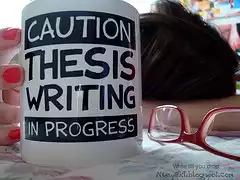Types of Quantitative Writing Assignments
Quantitative writing (QW) comes in a wide variety of forms. It doesn't have to mean a research paper. In fact, the majority of QW assignments are less elaborate than that. Rather, QW assignments can be created in a variety of genres, stakes and complexities, for a variety of audiences and purposes. They need not even be papers, per se. They can be done informally or formally, in-class or out-of-class, alone, in pairs, or in groups. QW assignments can be written primarily to the author as audience (so-called 'writer-based' prose), the teacher as audience, or as stand-alone formal documents written within a specific genre to policy makers or the general public. This page explores these different dimensions of quantitative writing.
Genre, audience, and purpose
In the real world, writers write to real audiences for real reasons. The exigency that motivates the writing is usually a problem of some sort-a disputed or unresolved question, a condition that needs changing, or a dilemma requiring a course of action. Moreover, writers usually write within a "genre" (memo, white paper, email, scholarly article or conference paper, poster session, op-ed piece, proposal, brochure), and each genre has its characteristic formats and reader expectations. The best writing assignments create such a rhetorical context for writers, often following the advice in the acronym RAFT -
- Role (or purpose) Examples of purpose include:Informative purpose using quantitative data to enlarge audience's understanding of a topic; Analytical or interpretive purpose using quantitative data to clarify audience's view of a topic; Persuasive purpose using quantitative data to change audience's view of a topic
- Audience Examples include experts or lay audience.
- Format (or genre) Examples include academic, white paper, letter to editor, op-ed piece, magazine article, or letter to a client.
- Topic (or Task (or problematic situation)
See The RAFTs Technique for some specific suggestions about using the RAFT technique and Holston and Santa, 1985 and Santa, 1988 for additional background material.
Length, stakes and complexity
QW assignments can be short or long, in-class or term-length. The work involved can be simple or complex (e.g. requiring high school-level math versus disciplinary-appropriate quantitative methods). The assignments can represent a major part of the course experience (e.g. a multi-deadline research project) with appropriate credit awarded, or only a minor part.
Options include:
- Low stakes assignments such as in-class freewrites, Documents composed in class in a very few minutes in response to an instructor prompt. One example is to ask students to summarize what they were assigned to read for class on that day. The need to hand something in provokes a more thoughtful response than simply asking students to discuss orally what was in the reading. Once the freewrite is done, the class discuss can take place, usually much more effectively than without the writing. Freewrites can be collected, or not, given credit or not. The point is to get students thinking about the reading before discussion. And of course, if you make a habit of asking students to freewrite, that increases the likelihood that they will do the reading. journal entries, thinking pieces, e-board postings
- Short, formal pieces that teach targeted skills such as interpreting and referencing a table, placing numbers in context, constructing a graphic, or adapting use of numbers to different audiences
- Major assignments, like a semester long research project with deadlines for each of the major parts: proposal, literature survey, theoretical analysis, empirical analysis, etc.
QW assignments can differ in the complexity of the work required, both in terms of the data and the sophistication of the analysis. The range of complexities could include:
- Providing students with the data, or telling them where to find the data, or asking them to find appropriate data on their own, or asking them to create their own data using surveys, for example
- Tasks requiring high-school level math--ratios, percentages, interpretation of graphs and tables, differences between mean and median or raw versus adjusted numbers, versus tasks requiring disciplinary-appropriate mathematics or statistical techniques
Informal Writing
Quantitative writing need not be formal. Informal writing is designed to be primarily read by the author. As such, informal writing is not usually graded, though it may be given credit for completion. Think about notes one takes on a journal article. Think about a research journal in which one jots down ideas for possible projects. These are examples of informal writing.
Course-related informal writing includes:
- Class notes
- Research Journals for a research project, where students are asked to narrate the process of their research
- Personal journals for reflection
- Free-writes to prepare for class discussion
Formats other than Essays
QW assignments can been completed in a variety of formats besides essays or other types of papers. The image at to the right is one example: A poster which makes an argument using imagery annotated by the author's analysis and conclusions. In recent years, we have observed explosive growth in a variety of new media including blogs, wikis and more. Blogs are commonly used as journals, and wikis can be used for virtually any type of QW assignment.



